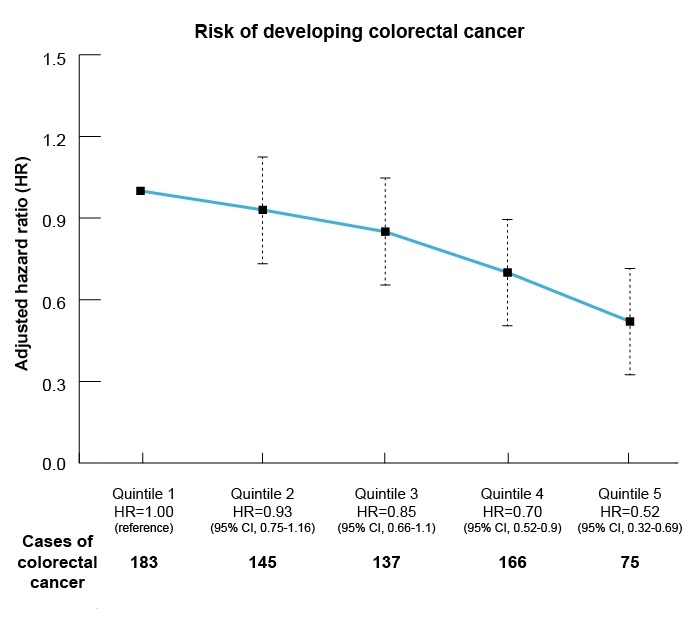The proportion of colonoscopies performed by a physician with at least 1 detected adenoma is called the adenoma detection rate. A study examined the association between the adenoma detection rate and the risk of colorectal cancer 6 months to 10 years after colonoscopy. In the graph below, physicians were sorted into quintiles based on their adenoma detection rate, with quintile 1 being the lowest rate of detection and quintile 5 being the highest. There were no significant differences in rates of complications. The hazard ratios (HRs) , shown along with their corresponding 95% confidence intervals (CIs) , were adjusted for other variables including patient age, sex, comorbidities, and indication for colonoscopy.  Which of the following statements best describes the study results?
Which of the following statements best describes the study results?
A) Adenoma detection rate could be a useful quality measure of a physician's colonoscopy performance
B) Adenoma detection rate is not associated with the incidence of colorectal cancer
C) Patients with no adenomas can be safely followed for 10 years without repeat colonoscopy
D) Physicians in quintile 3 prevent significantly more colorectal cancers than those in quintile 1
E) The risk of colorectal cancer appears to increase with higher adenoma burden
Correct Answer:
Verified
Q26: A large longitudinal study examined the association
Q27: A 33-year-old woman comes to the clinic
Q28: Researchers are conducting a clinical trial to
Q29: Women with inflammatory bowel disease (IBD) appear
Q30: The drug advertisement suggests that BoXeva should
Q32: A 45-year-old man is diagnosed with dilated
Q33: A three-arm, randomized crossover trial is conducted
Q34: A 5-day-old girl is brought to the
Q35: A 62-year-old man with a history of
Q36: A cohort study of 4,000 patients examines
Unlock this Answer For Free Now!
View this answer and more for free by performing one of the following actions

Scan the QR code to install the App and get 2 free unlocks

Unlock quizzes for free by uploading documents